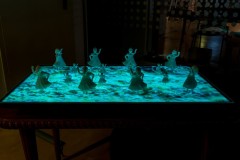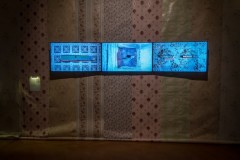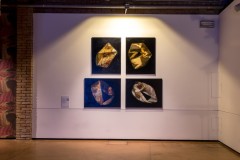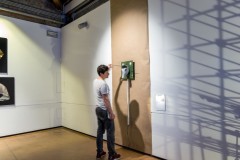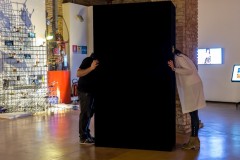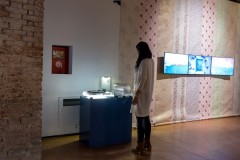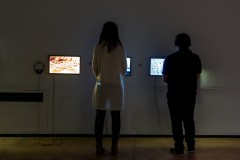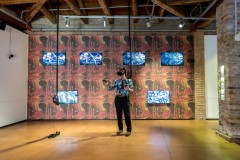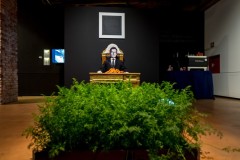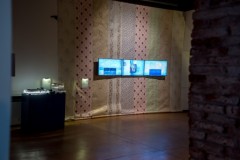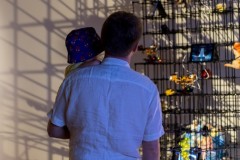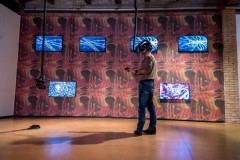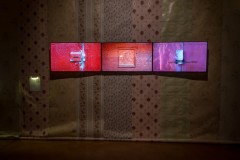Cyland Foundation Inc.
ARE PROUD TO PRESENT:
05.13 –06.28.2017
Ca’ Foscari University of Venice
in parallel with the 57th Venice Biennale
Cà Foscari Zattere, CULTURAL FLOW ZONE
Zattere, Dorsoduro 1392, 30123 Venezia
Exhibition Curators: Silvia Burini, Giuseppe Barbieri, Anna Frants, Elena Gubanova
Assistant Curators: Angela Bianco, Alessia Cavallaro, Varvara Egorova
Artists, Exhibition Participants: Lucia Veronesi (IT), Alvise Bittente (IT), Valentina Povarova (RU), Irina Nakhova (RU+USA), William Latham (UK), Alexandra Dementieva (Belg), Peter Patchen (USA), German Vinogradov (RU), Alexander Terebenin (RU), Alexei Kostroma (DE), Vitaly Pushnitsky (RU), Ludmila Belova (RU), Ivan Govorkov (RU), Elena Gubanova (RU), Carla Gannis (USA), Anna Frants (RU+USA), Alexander Shishkin-Hokusai (RU), Natalia Lyakh (FR), Boris Kazakov (RU).
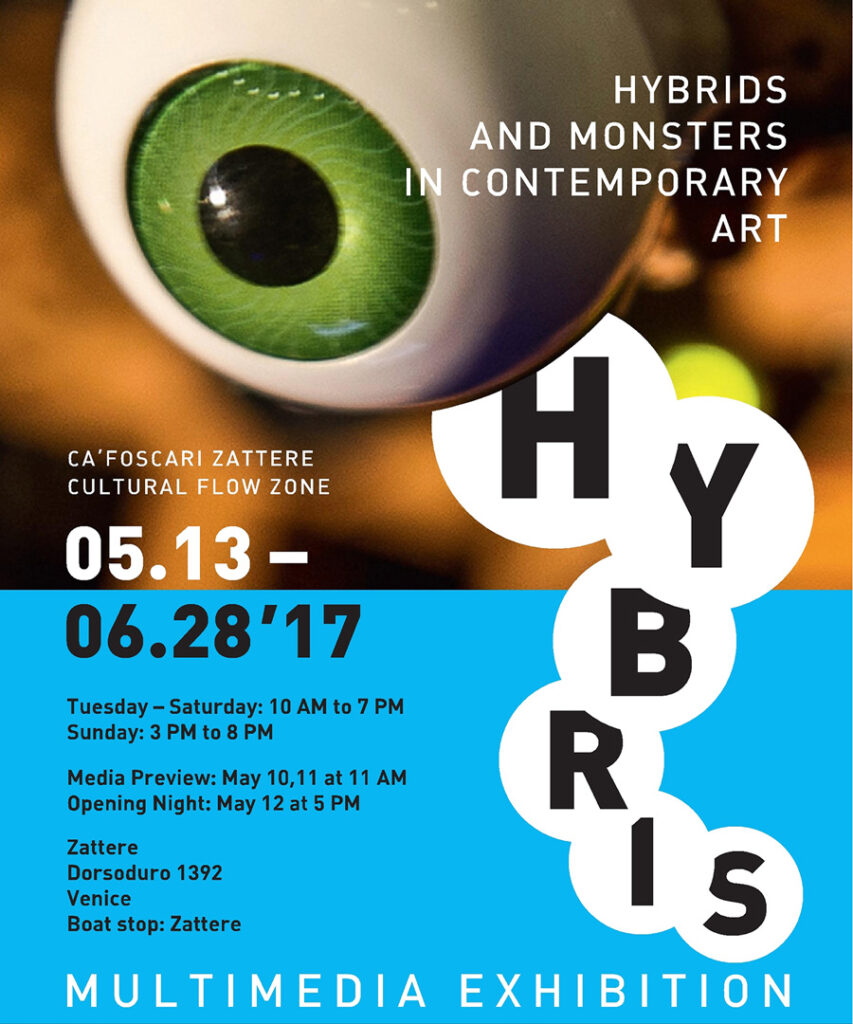
In the modern world, the notion or phenomenon of “hybrid” has become an inalienable part of the everyday life. There are hybrid mechanisms, computers, products, clothes, education, space, body, languages and hybrid warfare.
Etymologically, the Greek word hybris, from which the Latin hybridus also derives, meant sin and hubris. Early Greek philosophers viewed the nature and the man as an integral whole. A departure from natural functions was engendered by pride and audacity (hybris), which caused disorder, chaos. Such behavior of people (Icarus, Phaethon, Ajax) is described in the Greek mythology as an eternal strive of the human being towards “superiority”, which was implacably punished by the gods. If we consider the contemporary “technological revolution” from this point of view, then the striving of people to conquer the world at all costs and to create hybrids-prostheses for their living is, in fact, the hybris of the present.
However, in contemporary art, this striving frequently works productively, destroying the cliché of the “vile ordinariness” of the world. Rebellion, protest, audacity bring us back to the issues of the stand off between Cosmos and Chaos; they implacably place us before the mirror of our identity. It appears that artists, in a much more radical fashion than anybody else, offer a juxtaposition and interchanging of the “otherness” that intrudes into the space of our everyday life. What awaits us in the future if the technologies are used as an extension of the human kind? And what if the technologies are not going to need the human being at all?
The project in the exhibition halls of the library at Ca’ Foscari University, organized by MediaArtLab CYLAND, will showcase works of 19 artists from Italy, Russia, Great Britain, France, Germany, Belgium and the US. The project’s theme contemplates one of the mechanisms underlying the functioning of culture – the connection of the unconnectable, the problem of the relations between “one’s own” and “someone else’s”, the blurring of the borders between well-established concepts. At the exhibition, the neighbouring ofnew technologies and old media create a space where “personal territories” of artworks are not divided – they are germinating into each other, producing new “hybrid fruits” of the perception of art. Constructed cyberspaces, post-Soviet reflections, hybrids of geometry and classics, art and life – all this diversity of objects presented by the artists suggests that this theme is as relevant today as it was 5,000 years ago.
The dynamic nature of culture is a result of the coexistence of various interconnected languages within the same cultural space: the more crowded and saturated the cultural space is the more composite will be the system that originates from it and the more accurately will it reflect the world around us.
Elena Gubanova
www.cyland.org /web.archive.org/


